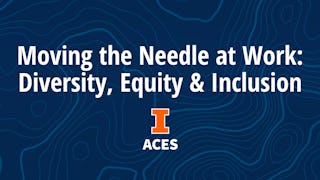What does it mean to truly change something? How does one persuade others to change? How do we reduce roadblocks to change? In this course, you’ll learn about the barriers to change and how to become more effective in inspiring change within others and your organization. Professor Jonah Berger of the Wharton School has designed this course to help you understand the REDUCE framework, and shows you how to develop your skills of persuasion and influence. By the end of this course, you’ll know both the strengths and weaknesses of certain strategies for removing barriers in change, plus you'll learn how to leverage those strategies to achieve change in both business and in life.

Gain next-level skills with Coursera Plus for $199 (regularly $399). Save now.

(471 reviews)
Skills you'll gain
Details to know

Add to your LinkedIn profile
8 assignments
See how employees at top companies are mastering in-demand skills

There are 4 modules in this course
In this module, we’ll begin by identifying the challenges of change and by defining what the Status Quo Bias is. You’ll weigh the advantages and disadvantages of change, and understand the right balance between potential gains and losses to overcome loss aversion. You’ll learn about the downsides of pushing people to change, discover the importance of being a catalyst, and establish the REDUCE framework. By the end of this module, you’ll be better able to understand the fundamental elements of both change and aversion to change, and be able to identify good change agents to implement while changing both minds and behavior
What's included
3 videos1 reading2 assignments1 discussion prompt
In this module, you’ll examine why warnings backfire, and learn how to ease the Endowment Effect to accomplish your goals. By analyzing the case studies of Procter & Gamble’s Tide Pods and the Arden House Experiments, you’ll be able to identify the process in which warnings become recommendations and the importance of agency and control for people. You’ll learn about successful strategies that allow for more agency in change — and through analyzing real-life examples, you'll discover how easing the Endowment Effect will help others let go of the attachment to the status quo. By the end of this module, you’ll learn effective strategies for surfacing the cost of inaction and framing new things as old, plus you'll be able to encourage others to change with more agency.
What's included
9 videos1 reading2 assignments
This module was designed to help you analyze the elements of distance and uncertainty in barriers to change and how to overcome them. By discussing examples of political polarization and Confirmation Bias, you’ll distinguish between the zone of acceptance and region of rejection, and assess strategies such as finding the movable middle and finding an unsticking point. You’ll explore the cost of uncertainty and analyze the strategies of Zappos, Acura, and Kia to evaluate best practices on lowering upfront costs. By the end of this module, you’ll be able to employ a toolbox of approaches to overcome elements of distance and uncertainty in change, and be prepared to bring the right persuasive skills to any situation.
What's included
10 videos1 reading2 assignments
In this module, you’ll examine the importance of corroborating evidence and choosing the right strategy for different segments of people and businesses. By looking at examples of the translation problem, you’ll gain a better understanding of the need for more proof and how concentration increases impact. Through the analogy of the sprinkler and fire hose strategies, you’ll discuss how to find the right balance of methods and where to spend your resources, depending on how strong the attitude for change is in a given group of individuals. By the end of this module, you’ll have a deeper understanding of all of the elements of barriers to change, plus you'll be able to strategize on how to best mitigate them to allow for greater changes within yourself and your organization.
What's included
5 videos1 reading2 assignments1 discussion prompt
Instructor

Offered by
Explore more from Leadership and Management
 Status: Free Trial
Status: Free TrialKennesaw State University
 Status: Preview
Status: PreviewUniversity of Illinois Urbana-Champaign
 Status: Free Trial
Status: Free TrialUniversity of Pennsylvania
 Status: Free Trial
Status: Free Trial
Why people choose Coursera for their career




Learner reviews
471 reviews
- 5 stars
88.74%
- 4 stars
9.34%
- 3 stars
1.48%
- 2 stars
0.42%
- 1 star
0%
Showing 3 of 471
Reviewed on Mar 6, 2021
this course was very insightful, giving me new perspective on how to tackle problems , how to recognise those problems, how to change those negative problems to positive
Reviewed on Apr 27, 2024
Understandable, practical and easy to use guides. Very simple and clean elaboration of the topic. Thank you for your effort and trying to make work better place to work and live
Reviewed on Aug 19, 2021
The best course I have ever attended. So clear, concise, easy to understand, and no wasted time. I enjoyed every single piece of information. Thank you so much!

Open new doors with Coursera Plus
Unlimited access to 10,000+ world-class courses, hands-on projects, and job-ready certificate programs - all included in your subscription
Advance your career with an online degree
Earn a degree from world-class universities - 100% online
Join over 3,400 global companies that choose Coursera for Business
Upskill your employees to excel in the digital economy
Frequently asked questions
To access the course materials, assignments and to earn a Certificate, you will need to purchase the Certificate experience when you enroll in a course. You can try a Free Trial instead, or apply for Financial Aid. The course may offer 'Full Course, No Certificate' instead. This option lets you see all course materials, submit required assessments, and get a final grade. This also means that you will not be able to purchase a Certificate experience.
When you purchase a Certificate you get access to all course materials, including graded assignments. Upon completing the course, your electronic Certificate will be added to your Accomplishments page - from there, you can print your Certificate or add it to your LinkedIn profile.
Yes. In select learning programs, you can apply for financial aid or a scholarship if you can’t afford the enrollment fee. If fin aid or scholarship is available for your learning program selection, you’ll find a link to apply on the description page.
More questions
Financial aid available,

